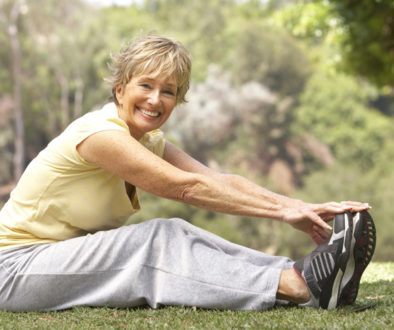What Happens to Your Posture as you Age?
As a young person we generally have a reasonable upright posture. Our head is tucked in, shoulders are down and back, we are long through our torso and our shoulders sit over our hips. The knees are soft without being snapped backwards and we are well balanced in our feet.
Due to today’s lifestyle of spending a large amount of time from early age sitting in front of TV screens, playing video games and generally being inactive a lot of the time, our posture is starting to deteriorate much earlier in life.
We are now seeing teenagers with forward neck posture, rounded shoulders and slumped forwards posture. This continues into their adult years with many people taking desk jobs which further exacerbates this poor posture. More often than not, we are not encouraged to take regular breaks during our work hours to alleviate tired neck, back and shoulder muscles that can no longer maintain an upright posture.
This poor posture can become your normal posture, and by the time you reach your 60’s and 70’s you are starting to look like a really old person that is all slumped forwards with forward head, rounded back, and hunched forwards at the hips always looking down and rather unstable on their feet.
So, what can you do to help prevent or correct poor posture?
Firstly, you need to be made aware that your posture is not ideal. It is impacting your health and general well being. You may be experiencing neck and shoulder pain and discomfort, lower back pain and even headaches. These are all a result of muscles that are being over used and put in positions that are not comfortable for them. Forward head is going to strain your neck and upper back muscles. Rounded forwards shoulders are a result of tight chest muscles and weak upper and mid back muscles. Leaning forwards from the lower back is a result of a weak core and weak lower back. As your posture deteriorates your balance is likely to suffer as well, as good balance relies on good posture.
There are a number of things you can do to improve your posture, even in your 60’s and 70’s. Firstly, have an assessment from a REPS registered personal trainer or a physiotherapist. They will point out where your posture is not ideal and work out a plan to help correct it. If at all possible try to avoid using braces and other devices to pull back the shoulders. You are better off stretching tight muscles and strengthening weak muscles and working to strengthen your core. It will take some time to correct a lifetime of poor posture, so don’t expect overnight results. If you consistently work on stretching and strengthening every day, over time you will stand taller, have your shoulders back where they belong and your head tucked back in again. Below is a list of some of the things you can do to help correct poor posture:
- Stretch the chest muscles to open the chest
- Strengthen the upper back to help pull the shoulders back
- Strengthen the mid back muscles to pull the shoulder blades down
- work on strengthening your core
- do yoga to help incorrect posture
- Lie on a roller or spine aligner to help open the chest
- check out your posture in shop windows
- Always be aware of shoulder, head and body position
- Work on balance to help you be more aware of posture
- Get your partner to remind you to stand tall
- Work out with a registered personal trainer
- Have a regular massage to help loosen tight muscles
- See an osteopath to help release tight muscles and realign the body
In Summary
You can generally correct poor posture, unless you have an underlying health condition or spinal or neck issue.
Using a regime of stretching and strengthening with a registered personal trainer you should be able to regain your ideal posture over time.
Try yoga, Pilates or Tai chi or any other stye of exercise that encourages you to be aware of your posture and balance at all times. Do a regular exercise class several times a week to strengthen your body and work on posture and balance using a variety of props. Always be aware of standing tall, tucking your head in and pulling your shoulders back and down and look ahead, not down.
If you stand tall you will feel better, breathe better and look better and can look to a future of improved health and movement.
Featured image from: <a href=”https://www.freepik.com/vectors/hand”>Hand vector created by freepik – www.freepik.com</a>




